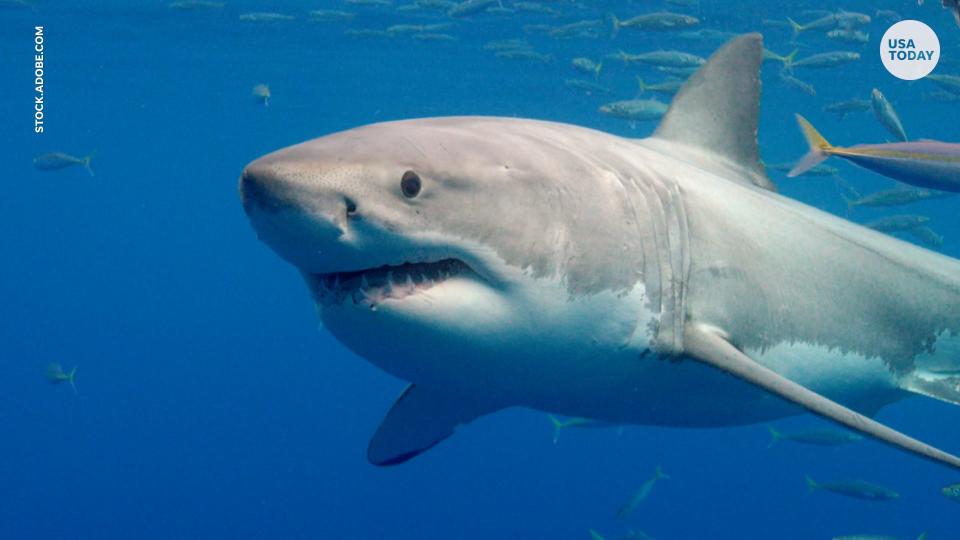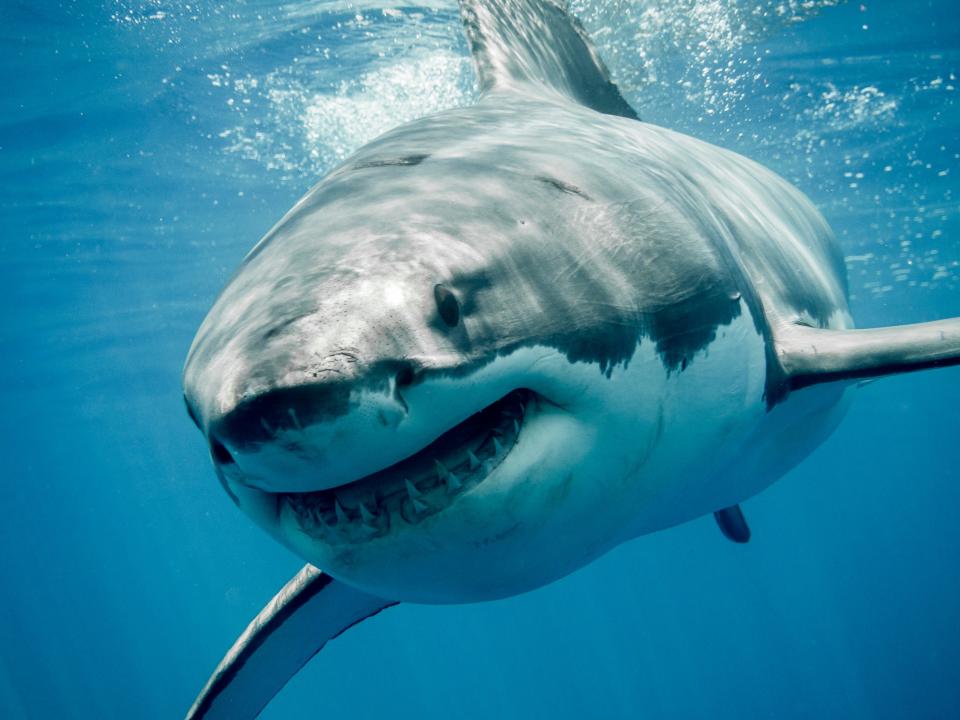Great white shark sightings spike off Gulf of Maine coast: Here’s why
Lately the news has been filled with shark attacks on humans and sightings of great white sharks along the New England coast.
In the news, shark experts have been interviewed stating that there are not more great white sharks, they are just coming closer to land for food.
Most recently I was listening to the national news when a “shark expert” from Stony Brook University said that the great white sharks had been overfished and were just now coming back to their normal numbers. I was astounded to hear this as there has not been any legal fishing for great whites for years. There has never been a large fishery for these sharks in the Northeast. There has never been a directed fishery for these sharks.

In the past, they have only been an incidental catch when fishing for other species.
According to the National Oceanic and Atmospheric Administration (NOAA) website, the number of white sharks in U.S. waters has been steadily increasing since protections were set in place in the 1990s and they are not at risk of becoming endangered in U.S. waters. White sharks can grow up to 20 feet and weigh up to 2 tons. At birth, they are about 4 feet in length. NOAA states that, “White sharks are the most widely protected shark globally.” Since 1997, the population has increased 42%.
Moon snails: The unique creature that eats other snails and clams
So, what is the real reason for increased shark attacks worldwide? Is it due to their main food source moving closer to shore? Is it that they have such a large food source that more of their pups are surviving? Is it just that they are so healthy from the rich increased food source of seals that they are producing more pups?
Let’s review what we do know about great white sharks. First, harbor seals are available to munch on everywhere in the Gulf of Maine. During the summer months, harbor seals normally go out to sea. They eat about 40 to 60 or so pounds of fish a day and add body weight during this time. In the last decade, the population of harbor seals has increased dramatically, and fishermen have found them offshore, mid-Gulf of Maine and in inshore waters during the summer. They normally are not found in the harbors until late fall and winter.
Unfortunately, finding them inshore during the summer months, in the harbors and estuaries has been causing multiple issues. They are still eating at least 40 pounds of fish per seal per day. Since the estuaries and salt marsh systems are the oceans nursery, these seals are eating upward of 100 small juvenile fish a day. Thus, causing an additional issue, eating down the food chain and competing with the apex predator sharks for food. With this increase in the numbers of seals and seal pups and a decrease in the numbers of fish, it is not unreasonable to assume they will attract the large sharks including great whites into the inshore areas and even the estuaries.
Decorator crabs: The amazing spider crustaceans found in Hampton Beach tidepools
It has been suggested that the juvenile sharks (6-9 feet) do not have the body mass yet to regulate their body temperature that allows the older sharks to maintain a body temperature warmer than the ambient water temperature. Thus, the smaller sharks are coming into the inshore areas for food, staying in warmer water. This would also lean towards the idea that more shark pups are surviving and looking for food, thus we are seeing them in the inshore areas where they are interacting with humans.

Do sharks ever get a taste for humans? Let’s look at an example that occurred in 1916 in New Jersey. Who can forget the movie “Jaws”?
Did you know that the movie may have been based on a real-life incident? According to the textbook “Fishes of the Gulf of Maine,” by Bigelow and Schroeder, and Nora Gonzalez, ("The 1916 Shark Attacks That Gave Sharks a Bad Rap," Encyclopedia Britannica), in 1916 there was a series of six shark attacks off the New Jersey coast. Five of the victims died of their injuries, one an 11-year-old boy who had been swimming with his friends in a tidal creek. The other boys made it out of the water, but he was pulled under. Shortly after a juvenile white shark was caught off the mouth of the creek in open water. Its stomach contents included some bones and flesh which turned out to be human. Once the shark was caught the attacks ended.
'We're the Titanic': Effects of climate change already changing life on Seacoast
Many human shark interactions end with sharks not completely eating the human. There are several explanations for this behavior. Shark societies and private researchers would have us believe that sharks don’t like the taste of humans. This has been debunked by several scientists. Dr. Daniel Bucher of Southern Cross University stated there is not any evidence that sharks do not like the taste of human flesh. He feels the falsehood was perpetuated to calm people's fear of sharks.
More likely sharks, like many predators, don’t always hunt just because they are hungry. They ofttimes find something that is new to them and test it: does it run away, does it fight back, is it edible? They also hunt just for practice. There are many explanations for why a person is “spit out” after a shark attack. Sharks are extremely efficient eating machines and thus we should be wary.
When we are in the ocean, we are in their space and should be vigilant. I suggest that when you are swimming if you see a school of fish nearby or a marine mammal, get out of the water. If you are near a shark when it is feeding, you are fair game.
Ellen Goethel is a marine biologist and the owner of Explore the Ocean World at 367 Ocean Blvd. at Hampton Beach.
This article originally appeared on Portsmouth Herald: Great white shark sightings spike off Gulf of Maine coast: Here’s why

